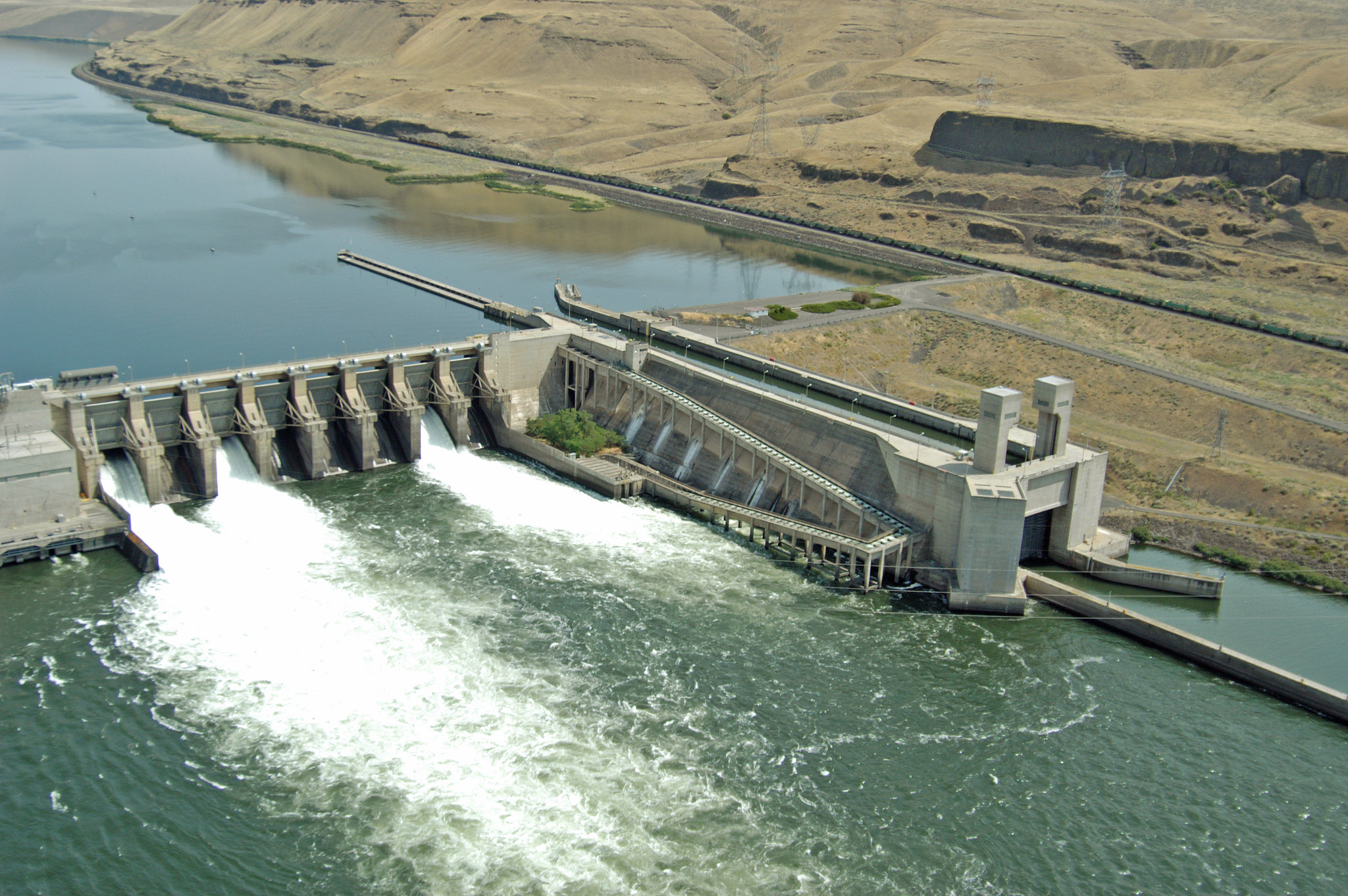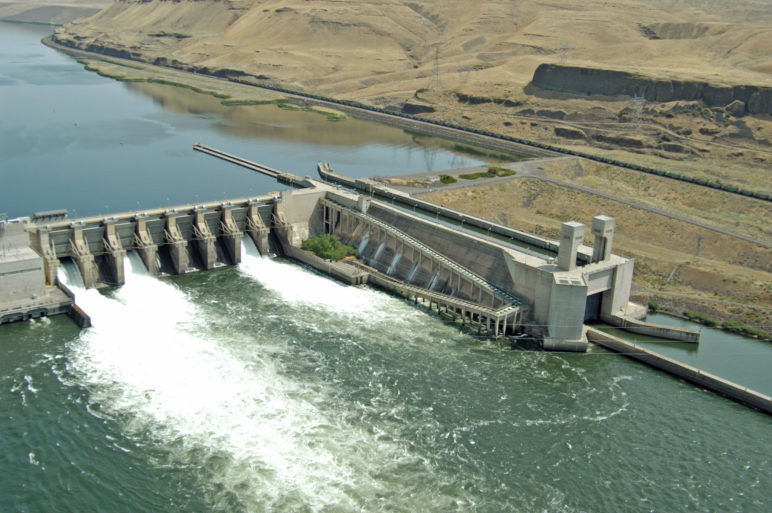“Breaching Snake River dams could save salmon and orcas, but destroy livelihoods” reads a March 24, 2019 cover story of the Sunday Seattle Times Pacific NW magazine. Such headlines reinforce the misperception that removing the dams would deal a blow to the economy of Eastern Washington. The recent economic impact analysis by ECONorthwest (ECONW) shows just the opposite: a river recovery project would add hundreds of jobs to the lower Snake River basin.
An influx of spending for engineering, construction, and environmental mitigation during and long after removal would increase employment, income, and output through the region.

In 2002, the Corps estimated the costs of breaching the dams and restoring the river would total $860 million in 1999 dollars or $1.6 billion in 2018 dollars. This influx of spending for engineering, construction, and environmental mitigation during and long after removal would increase employment, income, and output through the region. According to the modeling by ECONW, a capital project of this size would add over 300 jobs per year in the counties adjacent to the river for more than 30 years.
Restoring the lower Snake River would also bring more recreational visitors to enjoy white water recreation and other riverside activities. ECONW projects that by 2040 annual visitors would increase by 1 million compared with a baseline of 1.4 million visitors if the dams remain. Assuming visitor spending amounts in Asotin County from a 2016 study, those new visitors would spend an additional $80 million per year.
More jobs overall but some job loss
These increases in spending and net employment would boost the economy in southeastern Washington, but not every person in the region would benefit from breaching. The photo essay that accompanied the Seattle Times article offered a portrait of the work lives of the barge operators who could lose their jobs if barge traffic stops in Pasco, Washington, instead of continuing up the Snake River to Lewiston, Idaho.
But policymakers should keep any potential losses in perspective. According to state reports, inland water freight employed 248 people in all of Washington in 2017. None of these employers were located in the seven counties that comprise the southeastern corner of Washington where the lower Snake River is: Asotin, Benton, Columbia, Garfield, Franklin, Walla Walla, and Whitman. Tidewater, the leading barge operator, is headquartered far downriver in Vancouver, Washington.
Employers that do locate in the seven southeastern counties together employed over 175,000 people in 2017. National statistics show that monthly layoffs and discharges now average 1.2 percent per month. If southeast Washington follows that national average, then 25,000 people in those seven counties lose their jobs each year. Most are rehired after a job search of a few months. Every job is important to the person who holds it, but the larger context is important, too: the region has a dynamic economy where employers constantly add and subtract jobs from the labor market.
Read More:
Part I: An Overview of the Pros and Cons of Removing Snake River Dams
Part II: Dams’ Hydropower Is No Longer Particularly Cheap
Part III: Removing the Dams and Agriculture
More specifically, the Kennewick-Pasco-Richland area has recently added about 3,000 net new jobs per year, an annual employment growth rate of 2.1 percent since 2000. That rate is well above the state average of 1.2 percent. Any individual job losses from breaching the dams could be absorbed in an already dynamic local economy that would surge from a boost of new spending.
Far from destroying livelihoods, as the Seattle Times fears, breaching the dams and restoring the river would boost the economy that centers on the lower Snake. Agricultural production would continue much as it is now with a boost to transportation employment as some grain shipments move from barges to trucks and trains. Hundreds of people would work on removing the dams and, once the river is restored, hundreds of thousands of new fishers and rafters and their spending would visit the river basin. The economic prospects of the region are brighter without the dams.
Economics says it is time to restore the Snake River
In this case, as in the three previous cases in this series, the recent ECONW report makes clear that breaching the dams on the lower Snake River is a win for the Northwest:
- Northwesterners place a high value on improving the prospects for threatened and endangered salmon in the Snake River.
- Hydropower from the dams isn’t so cheap anymore; it may cost less to generate power from new, carbon-free resources like wind and solar.
- Even a river restoration project with a relatively modest mitigation fund could make farmers whole, offsetting nearly all of the increased cost of irrigation and grain hauling
- The costs and disruptions to jobs from breaching the dams are small compared with the benefits and the net new jobs the project would create.
The argument over the fate of the dams will continue to unfold in lunch counters, editorial pages, hearing rooms, and courts. A growing body of evidence now weighs in favor of breaching the dams and returning the lower Snake River to a natural state.












Gerry O'Keefe
The lack of shared facts between the Seattle/Portland environmental community and the people who live near and rely upon the Snake River dams for their livelihoods is counter-productive at best, shameful at worst. How can proponents of dam removal be absolutely certain that their plan is the best and only credible alternative? Is life really that easy and black/white? Then why have tribal governments (except for the Nez Perce) agreed not the challenge the FCRPS BiOp? Are there salmon recovery benefits from operating the system you’re not giving credence? Or are proponents asserting that they know what’s better for the ecosystem than the people who have live in it from “time immemorial?” Banging the drum and riling emotions doesn’t bring us any closer to salmon recovery goals. Indeed, in my experience it is an impediment to collaboration and implementing practical solutions.
Do any of you have meaningful personal relationships with the people living in these communities? Have you ever taken time to sit with them and understand their hopes and fears? I would like to see a little more effort to understand your neighbors, a measure of humility and much less piety from the author.
It is hard to see how proponents’ mindset differs from how issues are framed on Fox News: We are right and They are wrong (and evil). I hope that is not your intent.
Daniel Malarkey
As I noted in this series, the dams have been controversial from their very beginnings and they have prompted strong feelings for decades. The purpose of this series was to bring forward the best available research on how to think about the costs and benefits of removing them. Reasonable people can disagree about the right course of action when it comes to the dams. My hope is to encourage new conversations since some of the assumptions people hold about the dams’ services are no longer true.
Michael O'Dell
You are wrong, I’ll be the first one to say it. Not his intent, mine. I have lived in Lewiston valley over ten years and understand dams and mills are source of income for locals. Is the red scare of potentially locating elsewhere for different work that abrasive to you that the environment wilting before our very eyes means little in comparison to a barge operators job!? Ridiculous at best, psychotic at worst.
Resistance to assisting one of the most prominent rivers in the west is futile as the momentum of change is coming and the great Snake River will heal with the help of those caring not only for our dearly beloved neighbors but for the detrimental impact we have caused to a once thriving eco system. Those reluctant to help the water heal… didn’t need your help anyway, plenty others that will.
Gene Spangrude
To get an idea of the ‘bigger picture’ of this issue, I recommend reading this article as a starter:
Chapman, D.W. (1986). “Salmon and Steelhead Abundance in the Columbia River in the Nineteenth Century,” Transactions of the American Fisheries Society, 115: 662-670
The above reference should be readily available at larger libraries; such as Univ of Washington or Seattle City Libraries…..
The above article has a ‘salmon catch (Harvest) graph in it which shows that the ‘peak catch’ occurred in the 1880’s and has been trending generally downward ever since……… Perhaps as a result of ‘overfishing’ (fish wheels and numerous canneries) back in that era……..
The Chapman article also has an extensive ‘Reference List’ which should provide further interesting reading…….
Even back in the late 1800’s there were investigations being made into the ‘decline of the food fishes’ (a sub-title of a Federal Report dated 1876…..)
This was long before the construction of the Columbia and Snake Dams……. which kind of begs the question “how will their removal solve problems which were noted long before their construction??
charlie
Taking the dams out benefits more life forms then leaving them there. Increases in bio productivity increases jobs and food sources too on a regional scale. The process of removing the dams will creates jobs. Reducing the responsibility of the army corp by dam removal reduces taxes and reduces government. Less flooded area behind the dams makes more land available. Storing your water in a big puddle in the sun only means less for downstream communities. Using so much power and water that it kills off free long term sustainable biological assets is ridiculous. Its time to think and plan long term for the benefit of present and future generations.
charlie
Its time for the agricultural industry and farmers to acknowledge the negative impact they have on water quality and the marine ecosystem!!!
John (Jack) de Yonge
Until the U.S. entered World War I in late 1917, Americans exploited the Snake-Columbia salmonid fisheries as heavily as authorities would allow–to supply the English-French-Belgium-Italian Armies with canned fish-ration supplies and for the war’s first couple of years, the German’s ration supplies to their armies.
After the U.S. entered the war in the spring of 1917, with hardly not being able to supply any troops to the battlefields, the U. S. entered the salmonid ration market with huge buys for armies growing from near zero to armies growing into the millions by the time of the first American deployments in France and Belgium in the spring of 1918. The Pacific Northwest salmonid sales dump with the Nov. 1918 Armistice. By then the salmonid stocks had crashed for the netters, trollers and fishwheel operators. All part of the early, first and
savage exploitations of salmon and steelhead stocks.